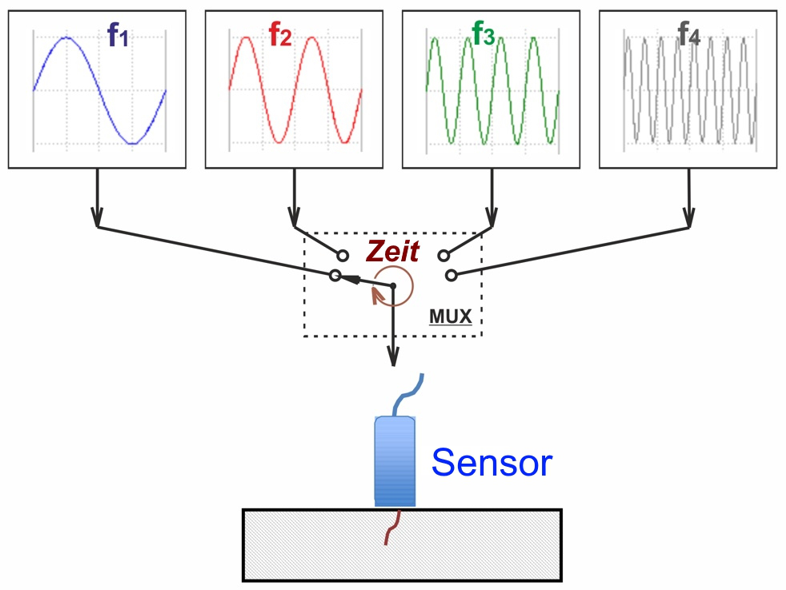Parameter-multiplexing means that a probe is operated sequentially with multiple test parameters. To this end the individual parameters are switched between in rapid succession and each is only active for a very short duration. This way it is possible to perform a multifrequency examination, for example. Naturally it is also possible to switch to other test parameters, according to a defined time frame (filters, gates or similar). Major advantages include considerable time savings and the reduction of hardware requirements compared to conventional methods. In comparison to simultaneous examinations, even the effects of mutual interference (crosstalk) between the measurement channels are reduced.
Compared to single frequency examination, multifrequency examination offers more possibilities for signal analysis. This means that it offers a considerable information “bonus”, so it leads to an increase in the reliability of examination conclusions.

